05 Sep Eight Ways to Communicate Your Strategy More Effectively
By Georgia Everse for Harvard Business Review, originally published on hbr.org.
A frustrated CEO recently shared with me that her employees had lost their edge. They were internally focused, their speed-to-market was down, and they couldn’t find a good balance between serving customers well while making healthy margins. The result was slow progress against the company strategy and an inability to profitably deliver on the value proposition. She had attempted to motivate employees and be clear about the strategy, but she was falling short and was looking for answers on what to do next. The solution in many cases is to overhaul internal communication strategies in order to convince employees of the authenticity, importance, and relevance of their company’s purpose and strategic goals. Here are just a few communication approaches that will help you effectively reach your employees and encourage behaviors that advance your strategy and improve your results.
1. Keep the message simple, but deep in meaning.
Most organizations have a deeper meaning as to why they exist. This tends to influence strategy, decision-making, and behaviors at executive levels, but often isn’t well articulated for employees. What you call it doesn’t matter, your purpose, your why, your core belief, your center. What does matter is that you establish its relevance with employees in a way that makes them care more about the company and about the job they do. It should be at the core of all of your communications, a simple and inspiring message that is easy to relate to and understand. Strategy-specific messages linked to your purpose become tools to help employees connect their day-to-day efforts with the aspiration of the company.
2. Build behavior based on market and customer insights.
For employees to fully understand how your strategy is different and better than the competition they need to be in touch with market realities. The challenge is in how to effectively convey those realities so that your people can act on them. By building internal campaigns based on market and customer insights, you bring your strategy to life for your employees through this important lens. Package your content so that it can be shared broadly with all departments in your organization, but in a hands-on way. Expose managers first then provide them with easy-to-implement formats for bringing their teams together, with toolkits that include all the materials they’ll need. The purpose is to encourage their teams to develop department-specific responses, and to generate new ideas and new behaviors based on what they’ve learned.
3. Use the discipline of a framework.
Not all messages are created equal. They need to be prioritized and sequenced based on their purpose. I suggest using an Inspire/Educate/Reinforce framework to map and deliver messages on an annual basis.
Inspire. Messages that inspire are particularly important when you are sharing a significant accomplishment or introducing a new initiative that relates to your strategy. The content should demonstrate progress against goals, showcase benefits to customers, and be presented in a way that gets attention and signals importance. The medium is less important than the impression that you want to leave with employees about the company. Whether you’re looking to build optimism, change focus, instill curiosity, or prepare them for future decisions, you’ll have more impact if you stir some emotion and create a lasting memory.
Educate. Once you’ve energized your team with inspiring messages, your explanations of the company’s strategic decisions and your plans for implementing them should carry more weight. To educate your teams most effectively on the validity of your strategy and their role in successful execution, make sure you provide job-specific tools with detailed data that they can customize and apply in their day-to-day responsibilities. It is most important for these messages to be delivered through dialogue rather than monologues, in smaller group sessions where employees can build to their own conclusions and feel ownership in how to implement.
Reinforce. It isn’t enough to explain the connection between your company’s purpose and its strategy — and between that strategy and its execution — once. You’ll need to repeat the message in order to increase understanding, instill belief and lead to true change over time. These reinforcing messages need to come in a variety of tactics, channels, and experiences and I’ve highlighted some approaches below. Ultimately, they serve to immerse employees in important content and give them the knowledge to confidently connect to the strategy. You’ll also want to integrate these messages with your training and your human resource initiatives to connect them with employee development and performance metrics. Recognize and reward individuals and teams who come up with smart solutions and positive change.
4. Think broader than the typical CEO delivered message. And don’t disappear.
Often corporate communications have a strict top-down approach. I’ve found that dialogue at the grassroots is just as important, if not more so. Employees are more likely to believe what leaders say when they hear similar arguments from their peers, and conversations can be more persuasive and engaging than one-way presentations. Designate a team of employees to serve as ambassadors responsible for delivering important messages at all levels. Rotate this group annually to get more people involved in being able to represent the strategy inside the company. And when the message comes from leadership, make sure it’s from your most visible, well-regarded leaders. Another mistake is the “big launch event and disappear” approach. Instead, integrate regular communications into employee’s daily routines through detailed planning against the messages mapped in your Inspire/Educate/Reinforce framework.
5. Put on your “real person” hat.
And take off your “corporate person/executive” hat. The fact is, not many people are deeply inspired by the pieces of communication that their companies put out. Much of it ignores one of the most important truths of communication — and especially communication in the early 21st century: be real. “Corporate speak” comes off hollow and lacking in meaning. Authentic messages from you will help employees see the challenges and opportunities as you see them and understand and care about the direction in which you’re trying to take the company.
6. Tell a story.
Facts and figures won’t be remembered. Stories and experiences will. Use storytelling as much as possible to bring humanity to the company and to help employees understand the relevance of your strategy and real-life examples of progress and shortfalls against it. Ask employees to share stories as well, and use these as the foundation for dialogue that foster greater understanding of the behaviors that you want to encourage and enhance versus those that pose risks. Collectively, these stories and conversations will be a strong influence on positive culture building behavior that relates to your core purpose and strategic goals.
7. Use 21st-century media and be unexpected.
The delivery mechanism is as important and makes as much of a statement as the content itself. Most corporate communications have not been seriously dusted off in a while, and the fact is, the way people communicate has changed tremendously in the past five years. Consider the roles of social media, networking, blogs, and games to get the word out in ways that your employees are used to engaging in. Where your message shows up also says a lot. Aim to catch people somewhere that they would least expect it. Is it in the restroom? The stairwell? On their mobile phone?
8. Make the necessary investment.
Most executives recognize how important their employee audience is. They are the largest expense to the company. They often communicate directly with your customers. They single-handedly control most perceptions that consumers have about the brand. So if this is a given, why are we so reluctant to fund internal communication campaigns? I suggest asking this question: What am I willing to invest per employee to help them internalize our strategy and based on that understanding, determine what they need to do to create a differentiated market experience for our customers? Do the math and set your hoped-for ROI high whether it is financial performance or positive shifts in behavior and culture. If you choose not to invest be certain of the risk. If you don’t win over employees first, you certainly won’t succeed in winning with customers, as they ultimately hold that relationship in their hands.



